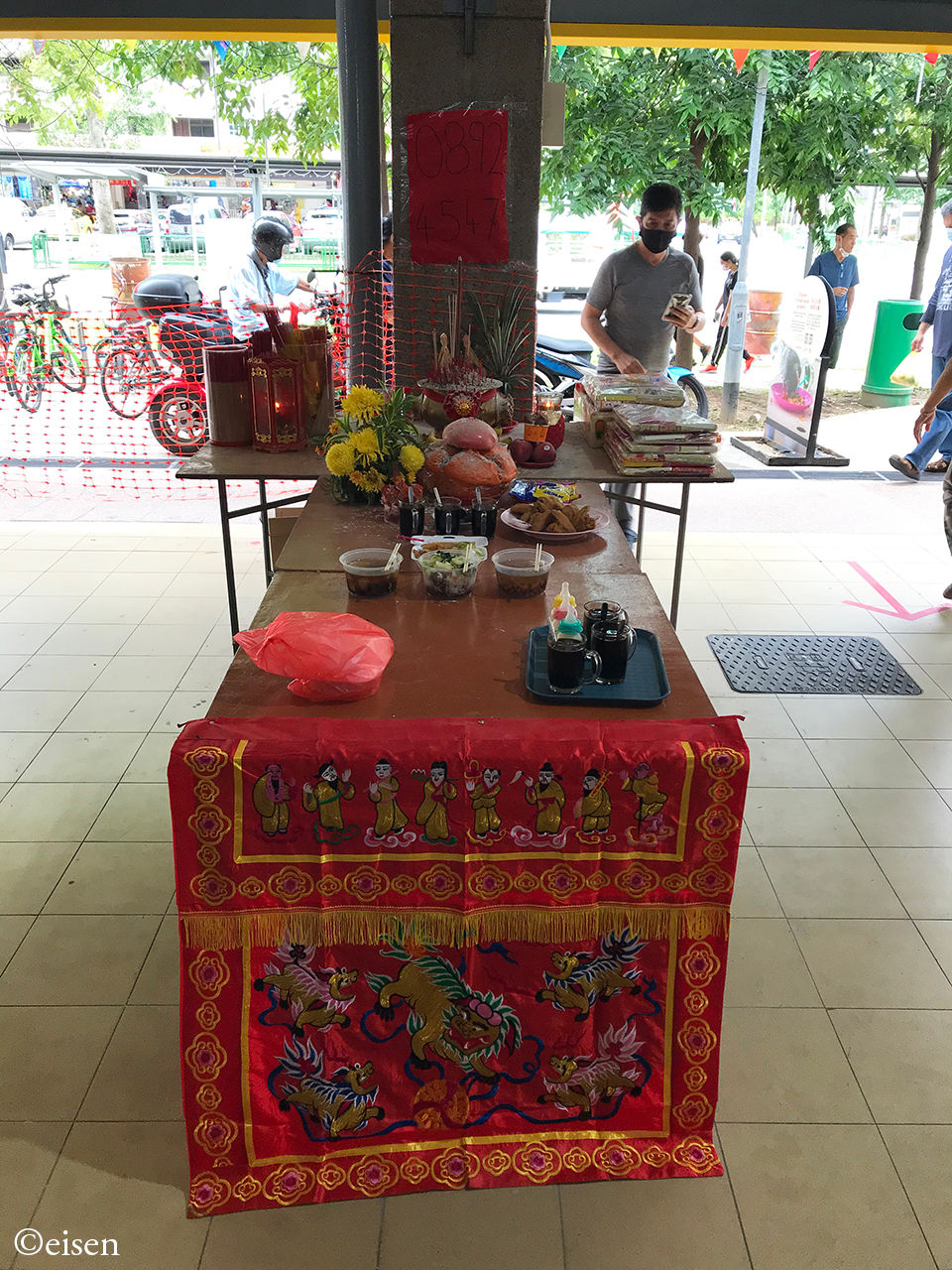Offerings for the dearly departed
- Eisen
- Aug 22, 2021
- 2 min read
Updated: Aug 23, 2022
I have a new hobby during the 7th Lunar Month - observing altars set up in public for wandering spirits, and taking photos of them as a permanent record of a vernacular religion.
This altar was at the ground floor of Bras Basah Complex, set up by the building’s business association.

An altar along Lorong 25 Geylang.

Another altar along Lorong 25 Geylang. This altar had offerings on the left for child and baby spirits - there were sweets, drinks, snacks, and even paper clothing.

Along Aljunied Road.

At Sims Vista Market & Food Centre.

At Serangoon Central Drive.

The altar above also had offerings for child and baby spirits, tucked below the table.

At Block 79 and 79A Circuit Road Food Centre.

The food centre’s altar also included a rare statue of Da Shi Ye, a disciplinarian of the Chinese netherworld. He oversees the spirits of the netherworld and ensures they do not harm the living.

I was delighted with this find because it is not common to find Da Shi Ye in deity form anywhere, be it temples or altars.

What’s fascinating is that usually, no two altars are entirely similar.
According to Taoist priests, an altar for wandering spirits must have specific items such as incense, flowers, and a form of illumination, be it candles or lamps.
However, at the grassroots level, these “rules” are not strictly followed. The people who set up altars, who could be hawkers, business owners, association members, and so on, add items which they feel wandering spirits would like. They include food sold at hawker centres, coffee and beer, pineapples, and huat kueh (prosperity cakes).
Even the colours of the joss sticks and crockery used are not strictly adhered to. For wandering spirits, green joss sticks and white plates and cups should be offered, while red joss sticks and crockery are reserved for deities and one’s ancestors. And yet red is applied to many altars for wandering spirits, perhaps because red is seen as an auspicious colour.
Anyway, in the realm of vernacular religion, one can’t say for sure what’s “right” and what’s “wrong”. To believers, they practise what’s passed down from generation to generation - and that’s what matters.

Comments